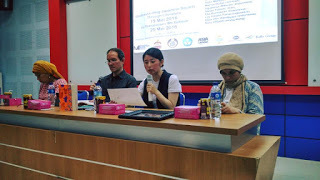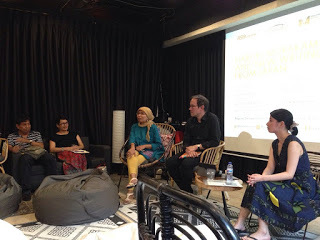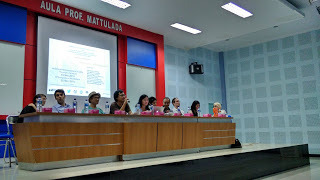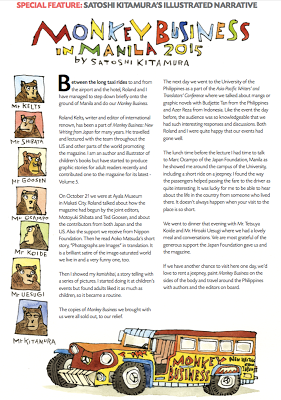Roland Kelts's Blog, page 25
May 31, 2016
Obama, Hiroshima and the view from Japan, for The Christian Science Monitor
For Japanese, Obama's Hiroshima visit is historic – but complicated
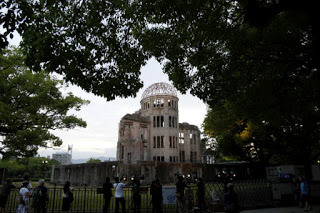
Obama toured Hiroshima's Peace Museum Friday, a move strongly supported by survivors of the first atomic bomb. But his trip stirred up tough questions about how Japan treats its own history.
By ROLAND KELTS, Contributor
TOKYO — As Japanese parsed the meaning of President Obama’s visit to Hiroshima on Friday, virtually all agreed it was historic. But that is where the consensus ends.
The controversy in the United States over whether he would apologize for the bombs dropped in August 1945 over Hiroshima and Nagasaki was answered unequivocally: He did not. But here in Japan, the event was being received with considerable skepticism, even as the city of 1.2 million prepared for Mr. Obama's tour of its Peace Memorial Museum – called "gut-wrenching" by Secretary of State John Kerry last month – and his speech near its cenotaph.
Japan is acutely sensitive to its history as the only nation to have experienced the devastation of nuclear weapons. Memorial ceremonies take place every August and are broadcast solemnly on network television. Yet Obama's visit shines a spotlight on uncomfortable and potentially unanswerable questions about a deeper national identity crisis stemming from World War II: Was Japan primarily an aggressor or a victim? And if the president’s purpose was not to apologize, then what was it?
The story wasn’t always so fraught. Japanese largely appreciated Obama's stated desire to rid the world of nuclear weapons, an ambition for which he was awarded the Nobel Peace Prize. In 2009, when Obama said he would like to visit Hiroshima, where 60,000 to 80,000 people were killed instantly by the bomb, designer Issey Miyake, a Hiroshima native, penned an op-ed for The New York Times, revealing publicly for the first time his experience of the bomb at age 7, and the death of his mother three years later from radiation exposure. (To this day, Mr. Miyake walks with a limp from an injury sustained during the bombing.)
Miyake urged Obama to “walk across the Peace Bridge in Hiroshima” as “a symbolic step toward creating a world that knows no fear of a nuclear threat.”
“Miyake’s article, in my view, was the starting point of this Obama Hiroshima story,” says Norhiro Kato, a literary critic and former professor emeritus at Waseda University. “But now, nobody seems to remember it.”
The Japanese government was less enthusiastic. Wikileaks published a 2009 State Department cable in which Japan’s vice-minister for foreign affairs told John Roos – who became the first US ambassador to attend the annual commemoration in 2010 – that the proposed visit was a "nonstarter." The government feared that it would embolden both those opposed to the US-Japan military alliance and anti-nuclear groups.
On the eve of the 70th anniversary of Japan’s World War II surrender last summer, the administration of Prime Minister Shinzo Abe officially reiterated its stance that Japan would never demand a US apology for the atomic bombs, highlighting an even starker fear: that an apology from an American president could set off a domino effect of apologies, sending Japanese officials to places like Nanjing, the Philippines, and Seoul to atone for war crimes of their own.
Today, with China conducting ever more elaborate military maneuvers in the South China Sea, and North Korea boasting of enhanced nuclear capabilities, Mr. Abe is passing legislation to beef up Japan's own arsenal of defensive and offensive options. A key part of that effort involves bolstering its strategic alliance with the US.
“The Abe administration welcomes Obama’s visit today as long as it is profitable for them,” says Mr. Kato, “especially for their upcoming elections. As long as it will do more good to them than harm, and not empower the domestic peace and anti-Abe, anti-US movements."
But, Kato notes, questions remain. "Is [Obama] going to connect the past with future plans for disarmament? Or is it the first step toward making an apology?" asks Kato. "If so, he should at least exhibit signs of this, even if he can’t do so explicitly. Right now, [his purpose] is so vague.”
Obama seemed keen to keep it that way. In an interview with Japan’s national broadcaster, NHK, the president said he didn’t know his agenda yet and hadn’t written his remarks.
American peace activist Steven Leeper, a longtime Hiroshima resident who worked alongside former mayor Tadatoshi Akiba for several years as chairman of the city’s Peace Culture Foundation, believes that both sides are spinning the visit to serve their own political ends.

“I’m afraid that this is going to be used by the Abe administration as evidence of how the militarist changes he’s been making, the cabinet resolutions and secrecy laws, is bringing Japan so close to the US that the president is even willing to go to Hiroshima,” he says. “‘See how we are reconciling thanks to our military cooperation?’ So the whole thing becomes an advertisement for militarism, when it needs to be built instead on a more peaceful and goal-oriented anti-nuclear platform.”
The Obama administration has tacitly and sometimes openly supported Abe’s hawkish legislative actions, praising its ally for responding to the threat of terrorism by seeking to amend its war-renouncing constitution, and to the need for tighter security measures through the recently passed state secrets law, which enables the government to punish journalists or others who breach it.
“Obama, too, is saying we’re getting closer to Japan and putting an emphasis on that relationship,” he says, adding that “[the Hiroshima visit] is a win-win for both administrations."
At least one group in Japan welcomed Obama with nearly unconditional gratitude. The hibakusha, survivors of the bombings at Hiroshima and Nagasaki, many of whom suffer the effects of radiation-borne illnesses and are in their twilight years, have waited lifetimes to show an American president the damage inflicted by the bomb, in the hope that the US leader will convey their stories to the rest of the world. Many are referring to Obama’s visit as a "first step" in a long process of understanding and healing.
“For more than 70 years, the dignity of the actual victims of the nuclear weapons has been neglected,” says Kato. “I think it is the primary duty of the Japanese government to preserve their human dignity, when the world community still cannot make clear the wrongfulness of atomic bombs, which cause the indiscriminate, disproportionate and direct death and suffering of civilians. So I can’t criticize the hibakusha for feeling optimistic about the first visit to Hiroshima by a US president as the first step toward restoring their dignity in the eyes of the world community.”
For many hibakusha, the first visit to Hiroshima by a sitting US president is seen as a first step toward a nuclear-free future."My hope is that he will apologize to the victims," said Nagasaki survivor Terumi Tanaka in a video interview with the Associated Press, "not to the general public. Some of those who were directly affected are still alive, and there are many who are suffering. We have been asking for the abolishment of all nuclear weapons. If he says this, we will take it as his way of expressing an apology. The survivors are not asking for anything else."
Hiroshima's Michiko Kodama was seven years old when she was pulled from the rubble strewn across the city. "What's matters is what he does after he returns to his country," she told the AP. "I'm not sure what sort of message he will deliver [at Hiroshima]. But when he returns home after witnessing the impact of nuclear weapons, I hope he will use his remaining power to convey that the world should not possess nuclear weapons. That is what I hope to see."
For Mr. Leeper, what will matter most is a definitive statement about the horror of nuclear weapons. “What I hope and what might be possible and who I really think Obama is down deep, and if he really wants to help – he will say that nuclear weapons must never, ever be used, under any circumstances. If the president said that, it would be great. Just saying that, even if he can’t do anything about it.”

Obama toured Hiroshima's Peace Museum Friday, a move strongly supported by survivors of the first atomic bomb. But his trip stirred up tough questions about how Japan treats its own history.
By ROLAND KELTS, Contributor
TOKYO — As Japanese parsed the meaning of President Obama’s visit to Hiroshima on Friday, virtually all agreed it was historic. But that is where the consensus ends.
The controversy in the United States over whether he would apologize for the bombs dropped in August 1945 over Hiroshima and Nagasaki was answered unequivocally: He did not. But here in Japan, the event was being received with considerable skepticism, even as the city of 1.2 million prepared for Mr. Obama's tour of its Peace Memorial Museum – called "gut-wrenching" by Secretary of State John Kerry last month – and his speech near its cenotaph.
Japan is acutely sensitive to its history as the only nation to have experienced the devastation of nuclear weapons. Memorial ceremonies take place every August and are broadcast solemnly on network television. Yet Obama's visit shines a spotlight on uncomfortable and potentially unanswerable questions about a deeper national identity crisis stemming from World War II: Was Japan primarily an aggressor or a victim? And if the president’s purpose was not to apologize, then what was it?
The story wasn’t always so fraught. Japanese largely appreciated Obama's stated desire to rid the world of nuclear weapons, an ambition for which he was awarded the Nobel Peace Prize. In 2009, when Obama said he would like to visit Hiroshima, where 60,000 to 80,000 people were killed instantly by the bomb, designer Issey Miyake, a Hiroshima native, penned an op-ed for The New York Times, revealing publicly for the first time his experience of the bomb at age 7, and the death of his mother three years later from radiation exposure. (To this day, Mr. Miyake walks with a limp from an injury sustained during the bombing.)
Miyake urged Obama to “walk across the Peace Bridge in Hiroshima” as “a symbolic step toward creating a world that knows no fear of a nuclear threat.”
“Miyake’s article, in my view, was the starting point of this Obama Hiroshima story,” says Norhiro Kato, a literary critic and former professor emeritus at Waseda University. “But now, nobody seems to remember it.”
The Japanese government was less enthusiastic. Wikileaks published a 2009 State Department cable in which Japan’s vice-minister for foreign affairs told John Roos – who became the first US ambassador to attend the annual commemoration in 2010 – that the proposed visit was a "nonstarter." The government feared that it would embolden both those opposed to the US-Japan military alliance and anti-nuclear groups.
On the eve of the 70th anniversary of Japan’s World War II surrender last summer, the administration of Prime Minister Shinzo Abe officially reiterated its stance that Japan would never demand a US apology for the atomic bombs, highlighting an even starker fear: that an apology from an American president could set off a domino effect of apologies, sending Japanese officials to places like Nanjing, the Philippines, and Seoul to atone for war crimes of their own.
Today, with China conducting ever more elaborate military maneuvers in the South China Sea, and North Korea boasting of enhanced nuclear capabilities, Mr. Abe is passing legislation to beef up Japan's own arsenal of defensive and offensive options. A key part of that effort involves bolstering its strategic alliance with the US.
“The Abe administration welcomes Obama’s visit today as long as it is profitable for them,” says Mr. Kato, “especially for their upcoming elections. As long as it will do more good to them than harm, and not empower the domestic peace and anti-Abe, anti-US movements."
But, Kato notes, questions remain. "Is [Obama] going to connect the past with future plans for disarmament? Or is it the first step toward making an apology?" asks Kato. "If so, he should at least exhibit signs of this, even if he can’t do so explicitly. Right now, [his purpose] is so vague.”
Obama seemed keen to keep it that way. In an interview with Japan’s national broadcaster, NHK, the president said he didn’t know his agenda yet and hadn’t written his remarks.
American peace activist Steven Leeper, a longtime Hiroshima resident who worked alongside former mayor Tadatoshi Akiba for several years as chairman of the city’s Peace Culture Foundation, believes that both sides are spinning the visit to serve their own political ends.

“I’m afraid that this is going to be used by the Abe administration as evidence of how the militarist changes he’s been making, the cabinet resolutions and secrecy laws, is bringing Japan so close to the US that the president is even willing to go to Hiroshima,” he says. “‘See how we are reconciling thanks to our military cooperation?’ So the whole thing becomes an advertisement for militarism, when it needs to be built instead on a more peaceful and goal-oriented anti-nuclear platform.”
The Obama administration has tacitly and sometimes openly supported Abe’s hawkish legislative actions, praising its ally for responding to the threat of terrorism by seeking to amend its war-renouncing constitution, and to the need for tighter security measures through the recently passed state secrets law, which enables the government to punish journalists or others who breach it.
“Obama, too, is saying we’re getting closer to Japan and putting an emphasis on that relationship,” he says, adding that “[the Hiroshima visit] is a win-win for both administrations."
At least one group in Japan welcomed Obama with nearly unconditional gratitude. The hibakusha, survivors of the bombings at Hiroshima and Nagasaki, many of whom suffer the effects of radiation-borne illnesses and are in their twilight years, have waited lifetimes to show an American president the damage inflicted by the bomb, in the hope that the US leader will convey their stories to the rest of the world. Many are referring to Obama’s visit as a "first step" in a long process of understanding and healing.
“For more than 70 years, the dignity of the actual victims of the nuclear weapons has been neglected,” says Kato. “I think it is the primary duty of the Japanese government to preserve their human dignity, when the world community still cannot make clear the wrongfulness of atomic bombs, which cause the indiscriminate, disproportionate and direct death and suffering of civilians. So I can’t criticize the hibakusha for feeling optimistic about the first visit to Hiroshima by a US president as the first step toward restoring their dignity in the eyes of the world community.”
For many hibakusha, the first visit to Hiroshima by a sitting US president is seen as a first step toward a nuclear-free future."My hope is that he will apologize to the victims," said Nagasaki survivor Terumi Tanaka in a video interview with the Associated Press, "not to the general public. Some of those who were directly affected are still alive, and there are many who are suffering. We have been asking for the abolishment of all nuclear weapons. If he says this, we will take it as his way of expressing an apology. The survivors are not asking for anything else."
Hiroshima's Michiko Kodama was seven years old when she was pulled from the rubble strewn across the city. "What's matters is what he does after he returns to his country," she told the AP. "I'm not sure what sort of message he will deliver [at Hiroshima]. But when he returns home after witnessing the impact of nuclear weapons, I hope he will use his remaining power to convey that the world should not possess nuclear weapons. That is what I hope to see."
For Mr. Leeper, what will matter most is a definitive statement about the horror of nuclear weapons. “What I hope and what might be possible and who I really think Obama is down deep, and if he really wants to help – he will say that nuclear weapons must never, ever be used, under any circumstances. If the president said that, it would be great. Just saying that, even if he can’t do anything about it.”
Published on May 31, 2016 04:45
May 25, 2016
Thank you, Makassar & Jakarta, Indonesia
Published on May 25, 2016 01:09
May 16, 2016
Manga pioneer Viz Media's 30th anniversary, for The Japan Times
Viz’s 30 years pack a punch in the U.S.
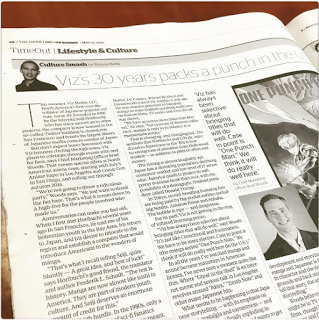 photo courtesy of Bjoern Eichstaedt
photo courtesy of Bjoern Eichstaedt
By ROLAND KELTS
This summer, Viz Media, LLC, North America’s first-ever distributor of Japanese popular culture, turns 30. Founded in 1986 by Seiji Horibuchi, who has since moved on to other projects, the company is now housed in the so-called Twitter building in downtown San Francisco, and boasts the largest library of Japanese media content outside of Japan.
But don’t expect buses festooned with Viz banners circling through town. Viz plans to celebrate through events with and for fans, says Chief Marketing Officer Brad Woods. That means special offers at North American anime cons, starting with July’s Anime Expo in Los Angeles and Comic Con in San Diego, and rolling out through autumn 2016.
“We’re not going to throw a ridiculous party,” Woods says. “We just want to thank the fan base. That’s what it comes down to. A high-five for the people involved who made us.”
Anniversaries can make you feel old. When I first met Horibuchi several years ago in San Francisco, he told me of his bohemian youth in the Bay Area, his return to Japan, and his desire to relocate to the region and establish a company that would introduce Americans to the wonders of manga.
“That’s what I recall telling Seiji, quite bluntly — A great idea, and best of luck!” says Horibuchi’s friend, translator and author Frederik L. Schodt, one of the first Americans to deliver manga in English. “The rest is history. Manga are now almost like sushi in America. They are part of modern youth culture. And Seiji deserves an enormous amount of credit for this.”
It was a high hurdle. In the 1980s, only a small dedicated group of sci-fi fanatics even knew what the word “manga” meant. Horibuchi roped together Japanese parent companies Shueisha Inc., Shogakukan Inc., and Shogakukan-Shueisha Productions, Co., Ltd. and rolled the dice.
“Every time I start a new business, I always think it's going to last forever,” Horibuchi tells me. “Manga was a totally new kind of content for the US, so I knew [the market] would grow slowly and take a long time to develop. It will take another 30 years to grow even further in the US, but people who love manga speak the same language everywhere.”
Today, Viz is the chief licensor of mass-market titles such as “Naruto,” “Dragon Ball,” “Sailor Moon” and “Pokemon,” and digitally publishes in English one of Japan’s most successful manga magazines, Weekly Shonen Jump.
 Viz Chief Marketing Officer Brad Woods
Viz Chief Marketing Officer Brad Woods
But it’s also seeking to expand via multimedia franchise deals. Woods, a veteran of Mattel, DC Comics, Warner Brothers and Dreamworks joined Viz roughly a year ago. He sees potential in bringing manga to mass English-speaking audiences via feature films, TV series and possibly Broadway shows.
“We have access to more titles than Marvel,” he says, “but in terms of Western influence, manga is only in its infancy as a mainstream media.”
That is changing fast. The medium that Horibuchi and Schodt introduced to Americans in the ’80s is now receiving tons of attention from Hollywood studios — in addition to piles of offers and money.
The timing is apt. Japan has a shrinking population, declining consumer market and low-level of IT awareness. America needs to project its soft-power overseas more than ever, with the possibility of a demagogic, freakoid president called Donald Trump.
In Tokyo, record-breaking licensing fees are being paid by big-pocket entities including Netflix, Amazon Prime and Alibaba. The bubble is ripe — and dangerous.
For its part, Viz is not getting in the ring of inflated licensing prices.
“Viz has always been selective about bringing titles that will do well,” says Woods. “It’s not like Crunchyroll and Funimation. We tend to be more careful.”
 Sailor Moon Crystal 3
Sailor Moon Crystal 3
In all the years I’ve watched manga and anime become mainstays in American homes, I’ve never seen a moment quite like this: Where “Ghost in the Shell ‘whitewashing'” is an Internet meme and serious talk in Los Angeles revolves around “Akira,” “Death Note” and other major Japanese hits.
What seems to be happening is that Japanese storytelling — with its emphasis on longing, nostalgia and earnestness — and stylized visuals are finally exploding in global markets. And Hollywood wants to get in on it.
But thus far, most Western adaptations of manga and anime properties have been horrible failures — critically and commercially.
“It’s a tough combination,” admits Woods. “When you Americanize, you shouldn’t take away what makes it a great story as a manga. A lot of the difference lies in character development and storyline. What keeps it manga and Japanese is the amount of depth to character and the richness of the backgrounds and back stories. It’s about how we tell that story, the art style and the storytelling.”
Woods believes that the best adaptations might be in TV series instead of feature films, though he is eager to see what Paramount and Dreamworks accomplish with their controversial “Ghost in the Shell” feature due next year, and he sees great potential in Viz's list of manga titles.
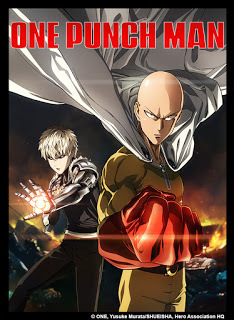 One Punch Man
One Punch Man
“I’m most excited by ‘One Punch Man,’ ” he says. “I think the combination of satire and action is going to resonate incredibly well with U.S. audiences, even if they don’t know manga art style.
“Second would be ‘Tokyo Ghoul.’ The manga is phenomenally successful, and people gravitate to the storyline. It still has zombie-ghoul stuff, but it’s a very engaging property of the kind I think usually translates well.”
Thirty years after Horibuchi tried his hand at a hippie outpost for Japanese pop culture, Viz has grown into a vast media empire. Now that Hollywood is fighting and paying for a piece, get ready for manga in your multiplex.
Roland Kelts is the author of “Japanamerica: How Japanese Pop Culture has Invaded the U.S.” He is a visiting scholar at Keio University in Tokyo.
 photo courtesy of Bjoern Eichstaedt
photo courtesy of Bjoern EichstaedtBy ROLAND KELTS
This summer, Viz Media, LLC, North America’s first-ever distributor of Japanese popular culture, turns 30. Founded in 1986 by Seiji Horibuchi, who has since moved on to other projects, the company is now housed in the so-called Twitter building in downtown San Francisco, and boasts the largest library of Japanese media content outside of Japan.
But don’t expect buses festooned with Viz banners circling through town. Viz plans to celebrate through events with and for fans, says Chief Marketing Officer Brad Woods. That means special offers at North American anime cons, starting with July’s Anime Expo in Los Angeles and Comic Con in San Diego, and rolling out through autumn 2016.
“We’re not going to throw a ridiculous party,” Woods says. “We just want to thank the fan base. That’s what it comes down to. A high-five for the people involved who made us.”
Anniversaries can make you feel old. When I first met Horibuchi several years ago in San Francisco, he told me of his bohemian youth in the Bay Area, his return to Japan, and his desire to relocate to the region and establish a company that would introduce Americans to the wonders of manga.
“That’s what I recall telling Seiji, quite bluntly — A great idea, and best of luck!” says Horibuchi’s friend, translator and author Frederik L. Schodt, one of the first Americans to deliver manga in English. “The rest is history. Manga are now almost like sushi in America. They are part of modern youth culture. And Seiji deserves an enormous amount of credit for this.”
It was a high hurdle. In the 1980s, only a small dedicated group of sci-fi fanatics even knew what the word “manga” meant. Horibuchi roped together Japanese parent companies Shueisha Inc., Shogakukan Inc., and Shogakukan-Shueisha Productions, Co., Ltd. and rolled the dice.
“Every time I start a new business, I always think it's going to last forever,” Horibuchi tells me. “Manga was a totally new kind of content for the US, so I knew [the market] would grow slowly and take a long time to develop. It will take another 30 years to grow even further in the US, but people who love manga speak the same language everywhere.”
Today, Viz is the chief licensor of mass-market titles such as “Naruto,” “Dragon Ball,” “Sailor Moon” and “Pokemon,” and digitally publishes in English one of Japan’s most successful manga magazines, Weekly Shonen Jump.
 Viz Chief Marketing Officer Brad Woods
Viz Chief Marketing Officer Brad WoodsBut it’s also seeking to expand via multimedia franchise deals. Woods, a veteran of Mattel, DC Comics, Warner Brothers and Dreamworks joined Viz roughly a year ago. He sees potential in bringing manga to mass English-speaking audiences via feature films, TV series and possibly Broadway shows.
“We have access to more titles than Marvel,” he says, “but in terms of Western influence, manga is only in its infancy as a mainstream media.”
That is changing fast. The medium that Horibuchi and Schodt introduced to Americans in the ’80s is now receiving tons of attention from Hollywood studios — in addition to piles of offers and money.
The timing is apt. Japan has a shrinking population, declining consumer market and low-level of IT awareness. America needs to project its soft-power overseas more than ever, with the possibility of a demagogic, freakoid president called Donald Trump.
In Tokyo, record-breaking licensing fees are being paid by big-pocket entities including Netflix, Amazon Prime and Alibaba. The bubble is ripe — and dangerous.
For its part, Viz is not getting in the ring of inflated licensing prices.
“Viz has always been selective about bringing titles that will do well,” says Woods. “It’s not like Crunchyroll and Funimation. We tend to be more careful.”
 Sailor Moon Crystal 3
Sailor Moon Crystal 3In all the years I’ve watched manga and anime become mainstays in American homes, I’ve never seen a moment quite like this: Where “Ghost in the Shell ‘whitewashing'” is an Internet meme and serious talk in Los Angeles revolves around “Akira,” “Death Note” and other major Japanese hits.
What seems to be happening is that Japanese storytelling — with its emphasis on longing, nostalgia and earnestness — and stylized visuals are finally exploding in global markets. And Hollywood wants to get in on it.
But thus far, most Western adaptations of manga and anime properties have been horrible failures — critically and commercially.
“It’s a tough combination,” admits Woods. “When you Americanize, you shouldn’t take away what makes it a great story as a manga. A lot of the difference lies in character development and storyline. What keeps it manga and Japanese is the amount of depth to character and the richness of the backgrounds and back stories. It’s about how we tell that story, the art style and the storytelling.”
Woods believes that the best adaptations might be in TV series instead of feature films, though he is eager to see what Paramount and Dreamworks accomplish with their controversial “Ghost in the Shell” feature due next year, and he sees great potential in Viz's list of manga titles.
 One Punch Man
One Punch Man“I’m most excited by ‘One Punch Man,’ ” he says. “I think the combination of satire and action is going to resonate incredibly well with U.S. audiences, even if they don’t know manga art style.
“Second would be ‘Tokyo Ghoul.’ The manga is phenomenally successful, and people gravitate to the storyline. It still has zombie-ghoul stuff, but it’s a very engaging property of the kind I think usually translates well.”
Thirty years after Horibuchi tried his hand at a hippie outpost for Japanese pop culture, Viz has grown into a vast media empire. Now that Hollywood is fighting and paying for a piece, get ready for manga in your multiplex.
Roland Kelts is the author of “Japanamerica: How Japanese Pop Culture has Invaded the U.S.” He is a visiting scholar at Keio University in Tokyo.
Published on May 16, 2016 01:44
May 8, 2016
Live in NYC at Parsons New School on May 10: The Roots of Manga
Roland Kelts, May 10, 2016 at 7pm
The 156th meeting of the NY Comics & Picture-story Symposium will be held on Tuesday, May 10, 2016 at 7pm at Parsons The New School for Design, 2 West 13th Street, in the Bark Room (off the lobby). Free and open to the public.
Roland Kelts on The Hybrid Roots of Manga:
How the influx of American and other Western cultural artifacts after World War II evolved into a form of expression whose visual and narrative characteristics are today considered distinctively Japanese.
Roland Kelts is the author of the critically acclaimed and bestselling Japanamerica. His articles, essays and fiction are published in The New Yorker, Time, The Wall Street Journal, Zoetrope: All Story, The New York Times, Newsweek Japan, Guernica, The Guardian and The Japan Times, among others. He is also a frequent contributor to CNN, the BBC, NPR and NHK. He is a visiting scholar at Keio University and contributing editor of Monkey Business, Japan’s premier literary magazine. His forthcoming novel is called Access.
The 156th meeting of the NY Comics & Picture-story Symposium will be held on Tuesday, May 10, 2016 at 7pm at Parsons The New School for Design, 2 West 13th Street, in the Bark Room (off the lobby). Free and open to the public.
Roland Kelts on The Hybrid Roots of Manga:
How the influx of American and other Western cultural artifacts after World War II evolved into a form of expression whose visual and narrative characteristics are today considered distinctively Japanese.
Roland Kelts is the author of the critically acclaimed and bestselling Japanamerica. His articles, essays and fiction are published in The New Yorker, Time, The Wall Street Journal, Zoetrope: All Story, The New York Times, Newsweek Japan, Guernica, The Guardian and The Japan Times, among others. He is also a frequent contributor to CNN, the BBC, NPR and NHK. He is a visiting scholar at Keio University and contributing editor of Monkey Business, Japan’s premier literary magazine. His forthcoming novel is called Access.
Published on May 08, 2016 12:45
April 30, 2016
Onward, Chicago
Published on April 30, 2016 20:51
April 26, 2016
Live in NYC, 4/27 - 4/30
Authors: Hideo Furukawa, Mieko Kawakami, Rebecca Brown, Linh Dinh
Editors: Ted Goossen, Roland Kelts, Motoyuki Shibata
*All events are free and open to the public, unless otherwise noted.
April 27 Wed, 6:30pm: New York University (7 East 12th Street, Room 321, New York, NY)April 28 Thur, 6pm: Kinokuniya Bookstore (1073 Ave of the Americas, New York, NY) *Brown and Dinh will not appear at this eventApril 29 Fri, 7pm: BookCourt (163 Court Street bet. Pacific & Dean Sts., Brooklyn, NY)
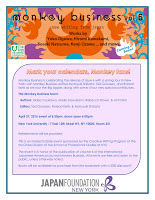

Editors: Ted Goossen, Roland Kelts, Motoyuki Shibata
*All events are free and open to the public, unless otherwise noted.
April 27 Wed, 6:30pm: New York University (7 East 12th Street, Room 321, New York, NY)April 28 Thur, 6pm: Kinokuniya Bookstore (1073 Ave of the Americas, New York, NY) *Brown and Dinh will not appear at this eventApril 29 Fri, 7pm: BookCourt (163 Court Street bet. Pacific & Dean Sts., Brooklyn, NY)


Published on April 26, 2016 12:23
April 16, 2016
Anime goes live, for The Japan Times
Anime biz sings the praises of shows
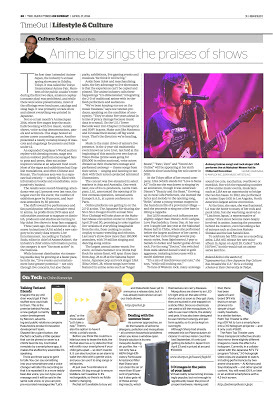
By ROLAND KELTS
The first time I attended AnimeJapan, the industry’s annual spring showcase in Odaiba, Tokyo, it was called the Tokyo International Anime Fair. Members of the public couldn’t enter during the first two days, amateur cosplay (costume play) was prohibited, and while there were some presentations, most of the offerings were brochures, catalogs and swag bags. It was primarily a trade show and almost everything was printed in Japanese.
Not so at last month’s AnimeJapan 2016, where five stages kept the main halls booming with live music, variety shows, voice-acting demonstrations, panels and seminars. One stage hosted an anime career counseling center. Another presented a nearly nonstop lineup of mascots and singalongs for parents and kids under 12.
An expanded Cosplayer’s World section replete with dressing rooms, stage sets and an outdoor platform encouraged fans to pose and preen, then eat anime-inspired cuisine at an adjacent food court. Most of the signs and exhibitions had English translations, and often Chinese and Korean. The business area was in a separate hall entirely — soberly lit, filled with information booths and roundtables, comparatively hushed.
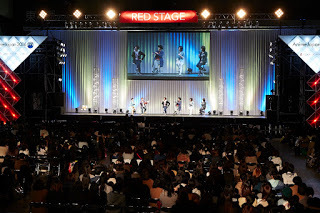 [(C) AnimeJapan Organization]
[(C) AnimeJapan Organization]
The results were record-breaking: attendance was up 11 percent over last year, the largest ever for the event; the number of exhibitors grew by 18 percent, and business attendees by 30 percent.
The shift toward live performance and fan participation reflects a broader trend in anime. As profits from DVD sales and collectables continue to stagnate or diminish, producers and studios are turning to big-ticket live shows to keep fans engaged.
Three years ago, the Association of Japanese Animations (AJA) added a new category to its yearly data reports: Live Entertainment. According to Tadashi Sudo, editor in chief of Anime!Anime!, the industry’s chief online information portal, the category is now “the most active” in the business.
While Internet distribution via streaming media may be growing at a faster pace, he tells me, “Live events and entertainment have greater potential — not only through live concerts, but also theme parks, exhibitions, live gaming events and musicals. We think it will be big.”
Aside from ticket and merchandising sales, the key advantage to live showcases is that the experience can’t be copied and pirated. The anime industry calls these happenings “2.5-dimensional,” integrating the 2-D of traditional anime with in-the-flesh performers and audiences.
“We’ve been keeping our eye on the music business,” says one veteran producer, speaking on the condition of anonymity. “They’re about five years ahead in terms of piracy damage because music data is so small. (In the U.S.) Tower Records went into Chapter 11 (bankruptcy) and HMV is gone. Major acts like Madonna and U2 make their money off big world tours. That’s the direction we’re heading, too.”
Music is the main driver of anime’s live presence. In the 4-year-old multimedia event known as Love Live!, last held at the beginning of this month over two days at Tokyo Dome (prime seats going for $30,000 in online auctions), voice actors dressed as their characters onstage and performed anisongs — theme songs from their series — singing and dancing in tandem with their screen-projected animated illustrations.
The concert was live-streamed in select markets in Asia and Australia. Less than a week later, one of its co-producers, Lantis Company, Ltd., announced the opening of its first overseas operation, AmuseLantis Europe S.A.S., at a press conference in Paris.
Online platforms are getting in on the 2.5-D action. The Japanese video-sharing site Nico Nico Douga’s fourth annual Nico Nico Chokaigi will take place at the Makuhari Messe convention center in Chiba on April 29 and 30, promising to yoke together live versions of everything imaginable from the site, from cooking to anime cosplay to sumo wrestling and robotics. Last year’s show drew more than 150,000 attendees, with 7.9 million singing and dancing along online.
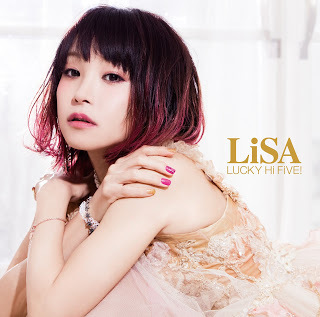 [(C) 2016 Aniplex Inc.]
[(C) 2016 Aniplex Inc.]
The largest annual anime-music live event, Animelo Summer Live (think Fuji Rock for anime fans), will span three days from Aug. 26 to 28 at the Saitama Super Arena. Japanese pop and rock singer LiSA (Risa Oribe), 28, whose songs have been featured in anime series such as “Angel Beats!,” “Fate / Zero” and “Sword Art Online” will be appearing at her sixth Animelo since launching her solo career in 2010.
At the Tokyo office of her record company, LiSA (which stands for “Love is Same All”) tells me she was drawn to singing by an animation, though it was American: Disney’s “Beauty and the Beast.” Growing up in rural Gifu Prefecture, she learned the lyrics and melody to the opening song, “Belle,” about a young woman trapped in the humdrum life of a provincial village — and she proceeds to sing me a few bars in lilting a cappella.
But LiSA’s musical rock influences are slightly edgier than Disney: Avril Lavigne, Love Psychedelico, Green Day. At her concert I caught late last year at the Makuhari Messe hall in Chiba, where she performed before the largest audience of her career, I watched her cycle through several pop music styles, from lighthearted J-pop to ballads to darker and harder guitar-driven rock. For the song “Doctor,” she switched from mini-skirted kawaii (cute) to goth aggressor, imitating intercourse with a model skeleton prop.
“It’s a mix of mischievous and cute,” she says, “while still rocking out.”
 [Photo by Hajime Kamiiisaka (C) Aniplex Inc, Sony Music Artists Inc.]
[Photo by Hajime Kamiiisaka (C) Aniplex Inc, Sony Music Artists Inc.]
To fans of Western rock, many anisongs sound too cute, saccharine, overblown or mawkish. But with the expanding number of live anime music events, musicians such as LiSA see an opportunity to bridge the two fan bases. In 2012, she performed at Anime Expo (AX) in Los Angeles, North America’s largest anime convention.
At the time, she says, she was frustrated. LA was the home to many of her rock and punk idols, but she was being received as ” ‘Lisa from Japan,’ a representative of anime.” She’s since become more deeply involved in anime, learning the processes behind its creation, even becoming a fan of auteurs such as directors Makoto Shinkai and the late Satoshi Kon.
To celebrate her fifth year as a recording artist, LiSA will release her new mini-album in Japan on April 20. Called “LUCKY Hi FiVE!,” its title alone would suit an anime series just fine.
Roland Kelts is the author of “Japanamerica: How Japanese Pop Culture has Invaded the U.S.” He is a visiting scholar at Keio University in Tokyo.

By ROLAND KELTS
The first time I attended AnimeJapan, the industry’s annual spring showcase in Odaiba, Tokyo, it was called the Tokyo International Anime Fair. Members of the public couldn’t enter during the first two days, amateur cosplay (costume play) was prohibited, and while there were some presentations, most of the offerings were brochures, catalogs and swag bags. It was primarily a trade show and almost everything was printed in Japanese.
Not so at last month’s AnimeJapan 2016, where five stages kept the main halls booming with live music, variety shows, voice-acting demonstrations, panels and seminars. One stage hosted an anime career counseling center. Another presented a nearly nonstop lineup of mascots and singalongs for parents and kids under 12.
An expanded Cosplayer’s World section replete with dressing rooms, stage sets and an outdoor platform encouraged fans to pose and preen, then eat anime-inspired cuisine at an adjacent food court. Most of the signs and exhibitions had English translations, and often Chinese and Korean. The business area was in a separate hall entirely — soberly lit, filled with information booths and roundtables, comparatively hushed.
 [(C) AnimeJapan Organization]
[(C) AnimeJapan Organization]The results were record-breaking: attendance was up 11 percent over last year, the largest ever for the event; the number of exhibitors grew by 18 percent, and business attendees by 30 percent.
The shift toward live performance and fan participation reflects a broader trend in anime. As profits from DVD sales and collectables continue to stagnate or diminish, producers and studios are turning to big-ticket live shows to keep fans engaged.
Three years ago, the Association of Japanese Animations (AJA) added a new category to its yearly data reports: Live Entertainment. According to Tadashi Sudo, editor in chief of Anime!Anime!, the industry’s chief online information portal, the category is now “the most active” in the business.
While Internet distribution via streaming media may be growing at a faster pace, he tells me, “Live events and entertainment have greater potential — not only through live concerts, but also theme parks, exhibitions, live gaming events and musicals. We think it will be big.”
Aside from ticket and merchandising sales, the key advantage to live showcases is that the experience can’t be copied and pirated. The anime industry calls these happenings “2.5-dimensional,” integrating the 2-D of traditional anime with in-the-flesh performers and audiences.
“We’ve been keeping our eye on the music business,” says one veteran producer, speaking on the condition of anonymity. “They’re about five years ahead in terms of piracy damage because music data is so small. (In the U.S.) Tower Records went into Chapter 11 (bankruptcy) and HMV is gone. Major acts like Madonna and U2 make their money off big world tours. That’s the direction we’re heading, too.”
Music is the main driver of anime’s live presence. In the 4-year-old multimedia event known as Love Live!, last held at the beginning of this month over two days at Tokyo Dome (prime seats going for $30,000 in online auctions), voice actors dressed as their characters onstage and performed anisongs — theme songs from their series — singing and dancing in tandem with their screen-projected animated illustrations.
The concert was live-streamed in select markets in Asia and Australia. Less than a week later, one of its co-producers, Lantis Company, Ltd., announced the opening of its first overseas operation, AmuseLantis Europe S.A.S., at a press conference in Paris.
Online platforms are getting in on the 2.5-D action. The Japanese video-sharing site Nico Nico Douga’s fourth annual Nico Nico Chokaigi will take place at the Makuhari Messe convention center in Chiba on April 29 and 30, promising to yoke together live versions of everything imaginable from the site, from cooking to anime cosplay to sumo wrestling and robotics. Last year’s show drew more than 150,000 attendees, with 7.9 million singing and dancing along online.
 [(C) 2016 Aniplex Inc.]
[(C) 2016 Aniplex Inc.]The largest annual anime-music live event, Animelo Summer Live (think Fuji Rock for anime fans), will span three days from Aug. 26 to 28 at the Saitama Super Arena. Japanese pop and rock singer LiSA (Risa Oribe), 28, whose songs have been featured in anime series such as “Angel Beats!,” “Fate / Zero” and “Sword Art Online” will be appearing at her sixth Animelo since launching her solo career in 2010.
At the Tokyo office of her record company, LiSA (which stands for “Love is Same All”) tells me she was drawn to singing by an animation, though it was American: Disney’s “Beauty and the Beast.” Growing up in rural Gifu Prefecture, she learned the lyrics and melody to the opening song, “Belle,” about a young woman trapped in the humdrum life of a provincial village — and she proceeds to sing me a few bars in lilting a cappella.
But LiSA’s musical rock influences are slightly edgier than Disney: Avril Lavigne, Love Psychedelico, Green Day. At her concert I caught late last year at the Makuhari Messe hall in Chiba, where she performed before the largest audience of her career, I watched her cycle through several pop music styles, from lighthearted J-pop to ballads to darker and harder guitar-driven rock. For the song “Doctor,” she switched from mini-skirted kawaii (cute) to goth aggressor, imitating intercourse with a model skeleton prop.
“It’s a mix of mischievous and cute,” she says, “while still rocking out.”
 [Photo by Hajime Kamiiisaka (C) Aniplex Inc, Sony Music Artists Inc.]
[Photo by Hajime Kamiiisaka (C) Aniplex Inc, Sony Music Artists Inc.]To fans of Western rock, many anisongs sound too cute, saccharine, overblown or mawkish. But with the expanding number of live anime music events, musicians such as LiSA see an opportunity to bridge the two fan bases. In 2012, she performed at Anime Expo (AX) in Los Angeles, North America’s largest anime convention.
At the time, she says, she was frustrated. LA was the home to many of her rock and punk idols, but she was being received as ” ‘Lisa from Japan,’ a representative of anime.” She’s since become more deeply involved in anime, learning the processes behind its creation, even becoming a fan of auteurs such as directors Makoto Shinkai and the late Satoshi Kon.
To celebrate her fifth year as a recording artist, LiSA will release her new mini-album in Japan on April 20. Called “LUCKY Hi FiVE!,” its title alone would suit an anime series just fine.
Roland Kelts is the author of “Japanamerica: How Japanese Pop Culture has Invaded the U.S.” He is a visiting scholar at Keio University in Tokyo.
Published on April 16, 2016 22:31
April 13, 2016
Satoshi on Monkeys in Manila
Published on April 13, 2016 09:07
April 12, 2016
Live in NYC at NYU, April 27, w/MONKEY BUSINESS
Published on April 12, 2016 05:41
April 7, 2016
Manga for beginners -- guest post by Danica Davidson
As manga has gone global, so has its fandom and its businesses. I started out as an American kid who watched anime without knowing it was anime, got interested in manga as a teen, began writing professionally about it, became involved with publishing companies to adapt and help edit manga, and am now releasing my first book on the subject,
Manga Art for Beginners
.

When I began writing about manga, it felt like literature’s best-kept secret in America. There were all these manga titles being brought over and sold in the manga section of bookstores, yet many people stayed away from reading manga because it was too“different” from what they’re used to (i.e., American comics). However, tides are changing.
I started writing about manga not only because I enjoyed reading it so much, but because I wanted to spread awareness on these great books. I started writing about it for general otaku fandom places, like Anime Insider, Otaku USA and Anime News Network, but I also made sure to branch out and pitch manga articles to places that might not cover it much or at all. This brought me to writing about it for Booklist and Publishers Weekly, and then on to MTV, CNN and The Onion. The fact that more diverse places are publishing articles on manga shows they’re aware of manga’s appeal.
My manga-related job that usually brings the most fascination to people was my job in adaptation. For a while I was working as a freelancer, adapting titles for Digital Manga Publishing. I wasn’t a translator, though sometimes people mistakenly took me for one. I would be given a copy of the original manga in Japanese to see how the panels and art look, and a raw translation on my computer. The translation would sound very literal and proper, and I had to make it flow, make sure it fit inside the balloons for talking, and make certain the original meaning was not altered in any way. This means sometimes I would have to put in footnotes to explain certain terms.
It was a challenging but fun job, though it eventually went fully in-house and that was the end of my adaptation freelancing days. I began doing proofreading for manga titles out of Yen Press, involved in a less creative way of editing, and continued my articles on manga. At one point I was talking with an editor about all my involvement on manga, and several months later she reached out to me, saying her publisher wanted to do a manga how-to-draw book and she’d be willing to look at a proposal I made for it.
I’d been wanting to write a book on manga for years, so I had to grab this opportunity, and I wanted to do a good job on it. I’d noticed there were quite a few how-to-draw books out there, but a lot of them seemed rushed, showing how to draw a character in maybe three steps. There are so many steps in-between those three drawings, but the books weren’t showing them. I also noticed that as interest in manga has grown, some companies had created subpar comics and slapped the word “manga” on it in hopes it sells.
With my book, Manga Art For Beginners , I show how to draw character types in about twelve or so steps, not three. At the start of the book, it shows how to draw parts of characters, like faces and eyes, then goes on to proportions, then gets into common character types found in manga, like ninjas, bishonen, shrine maidens, chibi and butlers. I worked with the artist Melanie Westin on it (the drawings are all Melanie’s, and the writing and layout of the book is mine), and she came to me through a recommendation at VIZ Media, America’s largest manga publisher. She’s also a longtime manga fan, and she draws in a beautiful manga style.

When I began writing about manga, it felt like literature’s best-kept secret in America. There were all these manga titles being brought over and sold in the manga section of bookstores, yet many people stayed away from reading manga because it was too“different” from what they’re used to (i.e., American comics). However, tides are changing.
I started writing about manga not only because I enjoyed reading it so much, but because I wanted to spread awareness on these great books. I started writing about it for general otaku fandom places, like Anime Insider, Otaku USA and Anime News Network, but I also made sure to branch out and pitch manga articles to places that might not cover it much or at all. This brought me to writing about it for Booklist and Publishers Weekly, and then on to MTV, CNN and The Onion. The fact that more diverse places are publishing articles on manga shows they’re aware of manga’s appeal.
My manga-related job that usually brings the most fascination to people was my job in adaptation. For a while I was working as a freelancer, adapting titles for Digital Manga Publishing. I wasn’t a translator, though sometimes people mistakenly took me for one. I would be given a copy of the original manga in Japanese to see how the panels and art look, and a raw translation on my computer. The translation would sound very literal and proper, and I had to make it flow, make sure it fit inside the balloons for talking, and make certain the original meaning was not altered in any way. This means sometimes I would have to put in footnotes to explain certain terms.
It was a challenging but fun job, though it eventually went fully in-house and that was the end of my adaptation freelancing days. I began doing proofreading for manga titles out of Yen Press, involved in a less creative way of editing, and continued my articles on manga. At one point I was talking with an editor about all my involvement on manga, and several months later she reached out to me, saying her publisher wanted to do a manga how-to-draw book and she’d be willing to look at a proposal I made for it.
I’d been wanting to write a book on manga for years, so I had to grab this opportunity, and I wanted to do a good job on it. I’d noticed there were quite a few how-to-draw books out there, but a lot of them seemed rushed, showing how to draw a character in maybe three steps. There are so many steps in-between those three drawings, but the books weren’t showing them. I also noticed that as interest in manga has grown, some companies had created subpar comics and slapped the word “manga” on it in hopes it sells.
With my book, Manga Art For Beginners , I show how to draw character types in about twelve or so steps, not three. At the start of the book, it shows how to draw parts of characters, like faces and eyes, then goes on to proportions, then gets into common character types found in manga, like ninjas, bishonen, shrine maidens, chibi and butlers. I worked with the artist Melanie Westin on it (the drawings are all Melanie’s, and the writing and layout of the book is mine), and she came to me through a recommendation at VIZ Media, America’s largest manga publisher. She’s also a longtime manga fan, and she draws in a beautiful manga style.
Published on April 07, 2016 09:05



